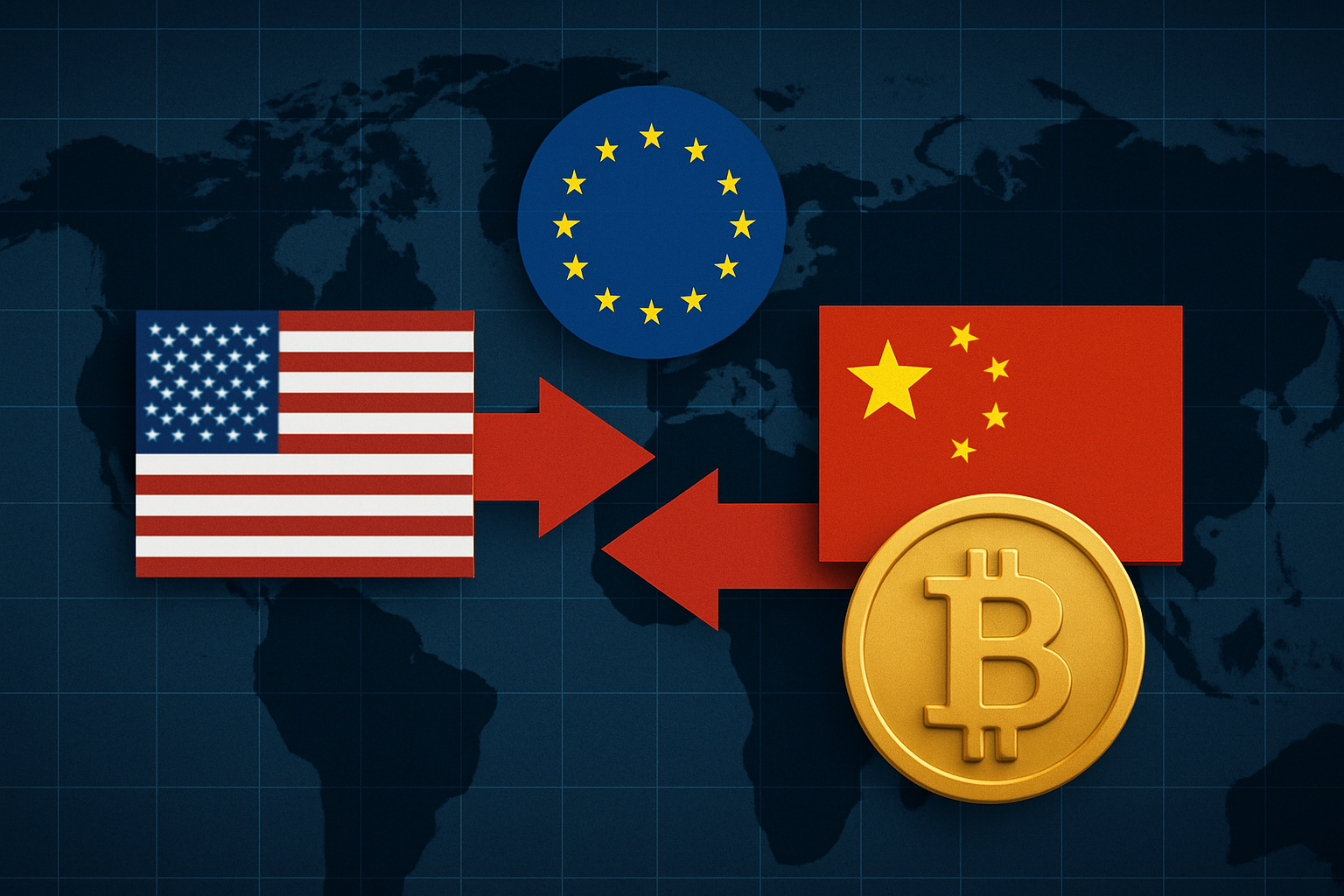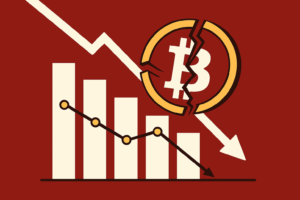What began as a bold policy declaration on April 2 has since spiraled into a full-blown global trade standoff, sending ripples through financial markets and pushing digital assets like Bitcoin into a storm of volatility.
On what President Donald Trump declared “Liberation Day,” the United States rolled out a sweeping 10% universal tariff on all imports — a first in modern economic history. In parallel, the White House introduced sharply higher duties, up to 50%, on imports from roughly 60 countries with significant trade surpluses against the U.S. China, the primary target, faced new average tariffs as high as 145%.
The announcement — aimed at protecting American industries and rebalancing trade relationships — was met with both praise and panic. While Trump’s supporters framed it as a decisive move to reclaim economic sovereignty, markets around the world recoiled.
A Familiar Pattern: Retaliation
China was the first to respond. Within 48 hours, Beijing imposed a 34% tariff on all U.S. imports, denouncing Washington’s approach as “unilateral hegemony.” In parallel, the European Union approved countermeasures of its own, authorizing €95 billion worth of retaliatory tariffs on American goods ranging from agricultural products to motorcycles and machinery.
The message from America’s biggest trade partners was clear: if Washington turns up the heat, so will everyone else.
Bitcoin Drops Alongside Traditional Markets
In the days that followed, the economic fallout wasn’t just visible on Wall Street. Bitcoin — often hailed as an alternative to traditional finance — didn’t escape the turmoil. After reaching nearly $88,500, the price of BTC tumbled further to around $74,500 in just under a week. Investors, bracing for a broader slowdown, pulled capital from riskier assets. Gold rallied. Stocks slid. And Bitcoin followed the broader trend.
A Tactical Pause, But Not for Everyone
On April 9, in a bid to prevent further escalation, the White House announced a temporary 90-day suspension of many of the newly announced tariffs — but only for U.S. allies. China remained under maximum pressure. Still, the move calmed markets temporarily. Equities bounced. Gold retreated slightly. And Bitcoin began to climb again, recovering to the $82,000 range.
The relief, however, was partial. China, excluded from the pause, increased pressure on the United States with stronger diplomatic rhetoric and the threat of further economic retaliation. Markets remained jittery, and the possibility of a full trade breakdown between the world’s two largest economies still loomed.
Rhetoric Softens, Markets Rebound
By late April, cracks began to show in Washington’s hardline stance. U.S. Treasury Secretary Scott Bessent publicly acknowledged that the newly imposed tariffs were “not sustainable.” Days later, President Trump hinted that tariffs on Chinese goods could be “substantially reduced,” provided negotiations made progress.
That softening tone was enough to send markets higher. Bitcoin, which had spent most of April recovering ground, surged past $93,000 by the end of the month — up nearly 25% from its early-April low. The fear trade was fading. Risk appetite was returning. Even gold, which had soared earlier in the month, began to decline as investors rotated back into growth assets.
A Breakthrough in Geneva
Then came the breakthrough. On May 12, after weeks of backchannel talks, the U.S. and China agreed to a 90-day truce.
The details:
- U.S. tariffs on Chinese goods were cut from 145% to 30%
- China lowered its tariffs on American goods from 125% to just 10%
- Both sides agreed to suspend future increases during the negotiation window
The news acted like a circuit breaker for global markets. Stocks rallied. The dollar strengthened. Gold dropped 2% in a day. And Bitcoin — which had been hovering near $95,000 — jumped to over $105,000, its highest price in months.
A Currency Without Borders in a World of Borders
The crypto market’s reaction tells a larger story. While Bitcoin has long been promoted as a hedge against inflation and centralized monetary policy, the past six weeks showed that it’s also deeply tied to global risk sentiment. When trade tensions peaked, Bitcoin sold off. When diplomacy resumed, it rebounded — strongly.
Some analysts have pointed to Bitcoin’s price action as evidence of its growing maturity. “It’s no longer just retail-driven,” one strategist told Bloomberg. “Institutional capital is now reacting to macro forces, and Bitcoin is moving in rhythm with that.”
Others see the rebound as a reflection of Bitcoin’s unique appeal. In a world of tariffs, capital controls, and fragmented markets, a global, decentralized currency becomes increasingly attractive — especially when traditional systems feel shaky.
What Comes Next?
While the truce between the U.S. and China has temporarily calmed markets, few believe the tensions are resolved for good. European officials continue to prepare retaliatory options. China is watching U.S. election dynamics closely. And investors — in both traditional and digital assets — remain on alert.
For now, Bitcoin has emerged from the crisis stronger than before. From $74,500 lows to $105,000 highs in under six weeks, its V-shaped recovery mirrors the shifting tides of diplomacy and economic strategy.
The trade war may have been sparked by tariffs, but its effects were felt everywhere — from shipping lanes to blockchain ledgers.







